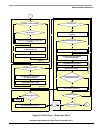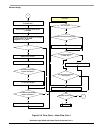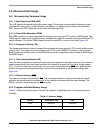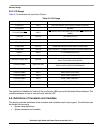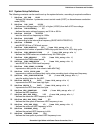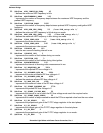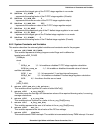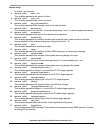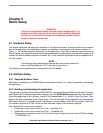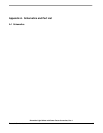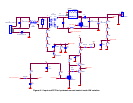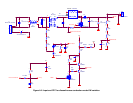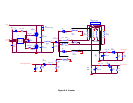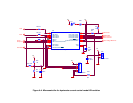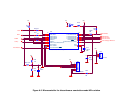
Dimmable Light Ballast with Power Factor Correction, Rev. 1
Freescale Semiconductor 57
Chapter 6
Demo Setup
WARNING
This circuit is powered directly from the mains voltage supply. It is
dangerous to touch any part of the circuit. When working with such
circuits, do not connect any scope or development system without
using an isolation transformer.
6.1 Hardware Setup
This section describes the setup and operation of the light ballast demo. Since the tubes are an integral
part of the application, the whole demo system is considered. A photograph of the demo is shown in
Figure 1-1. No hardware setup is required to run the application. If you wish to debug the application using
Monitor Mode, you must take apart the plexi glass, disconnect the light ballast from the mains supply, and
connect the Monitor Mode connector to header JP5. In this case the light ballast must be supplied with a
DC-bus voltage.
NOTE
The dimming level potentiometer must be set to the correct position for
entry to Monitor Mode (pin PTA1 must be at logic level 1).
The dimming level potentiometer is connected to the JP2 header.
6.2 Software Setup
6.2.1 Required Software Tools
Metrowerks CodeWarrior for MC68HC08 microcontrollers version 3.0, or later, is required for developing
the application.
6.2.2 Building and Uploading the Application
The application software is delivered as DLB-LB8-001.mcp project file (see Reference [5]) with C-sources
and header files.To build the application software, open the DLB-LB8-001.mcp project file. Set definition
lines at the beginning of “dlb_program_config.h” file as described in
5.6.1 System Setup Definitions. Then
execute the Make command in the Project menu. This will build and link the application and all required
Metrowerks libraries. Using Metrowerks CodeWarrior, the executable s19 file will be created. There are
six possible versions of s19 file, which are also delivered as part of the software package.
The following SW versions are available:
• Hysteresis current control mode for 50 Hz— Hyst50Hz.s19
• Hysteresis current control mode for 60 Hz — Hyst60Hz.s19
• Discontinuous conduction mode for 50 Hz and for input voltage lower than half of DC-Bus voltage
— DCM50HzL.s19



